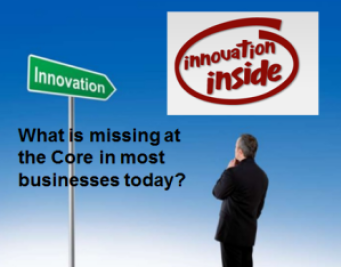 Innovation has sat outside the core of organizations’ central systems for long enough.
Innovation has sat outside the core of organizations’ central systems for long enough.
Arguably this lack of being a core as the central need of providing sustainable growth holds the deeper understanding of innovation back.
A core that could offer up the sustaining value and contribution innovation can make, to the growth and future well-being of organizations and having available the level of resources and commitments it needs. Today innovation seems to be falling short in delivering on its promise. Why?
A three-part series on rethinking the management of the innovation system.
Part one, building the business case of needed change in how we manage innovation.
This part is about those constant top-level concerns that needs finally to be addressed, if innovation ever can become core
Continue reading “Moving innovation into our Core- Part One”








